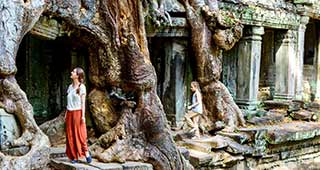Book NOW for $1 £1 €1 • Flexible Payments • No Change Fees • Private Departures Available
- Home >>
- Ho Chi Minh City Guide
- Ho Chi Minh City Guide
- Trips that visit Ho Chi Minh City
- Ho Chi Minh City's best spots
- Tailor-made holidays that visit Vietnam
- Food & Drink in Ho Chi Minh City
- Getting Around Ho Chi Minh City
- Group Tours to Vietnam
- Alternative things to do in and around Ho Chi Minh City
- Safety in Ho Chi Minh
- Vietnam Blogs
Ho Chi Minh City Guide
Western modernism delightfully clashes with a quintessentially oriental twist, giving Ho Chi Minh City a character that is at once traditional and contemporary. Formerly known as Saigon during its time as the capital of South Vietnam, the metropolitan city still retains a grand significance that one would commonly associate with a nation’s capital. Every significant step in Vietnam’s history can be experienced by walking the city’s streets, from ancient Imperial Vietnam, through French rule to the nation’s infamous war with the USA. The city is strewn with some of the country’s finest museums, greatest architectural marvels, liveliest markets and most deliciously tempting street food. Ho Chi Minh City manages to take the influence of Vietnam’s past in its stride whilst embracing everything that the future holds, entwining a fascinating history with an optimistic future.
Trips that visit Ho Chi Minh City
Vietnam Highlights
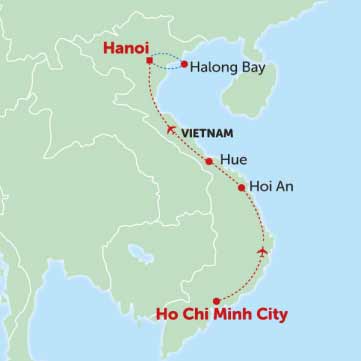
Duration:8 Days
Route:Ho Chi Minh City to Hanoi
Tour Code:ICVH
Cambodia & Vietnam Highlights
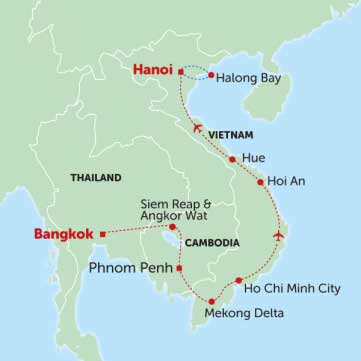
Duration:15 Days
Route:Bangkok to Hanoi
Tour Code:ICCV
Vietnam in Two Weeks
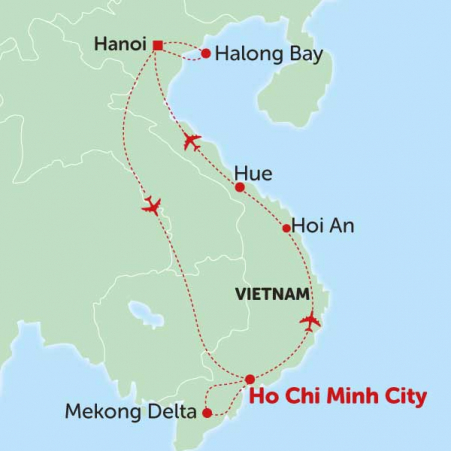
Duration:12 Days
Route:Ho Chi Minh City to Ho Chi Minh City
Tour Code:ICV2
Best Spots in Ho Chi Minh City
One inevitability of any visit to Ho Chi Minh City is the fact that most of a traveller’s time spent here will be on the captivating streets of District 1. Overtly traveller-friendly and home to most of the city’s greatest draws, both tangible and experiential, whether visitors are travelling on a shoestring budget or seeking a more opulent taste of Vietnam. Whilst District 1 very much justifies the attention that it receives from those that have wandered the cobbled paving of its winding alleys and the culture-flanked aisles of its captivating museums, diverging from this frequented neighbourhood allows travellers to encounter the broader range of delights that Ho Chi Minh has to offer. Conveniently, the neighbourhoods are numbered, helping avoid any cross-language confusion. Here are the most justifiably popular districts that can be found in Vietnam’s capital:
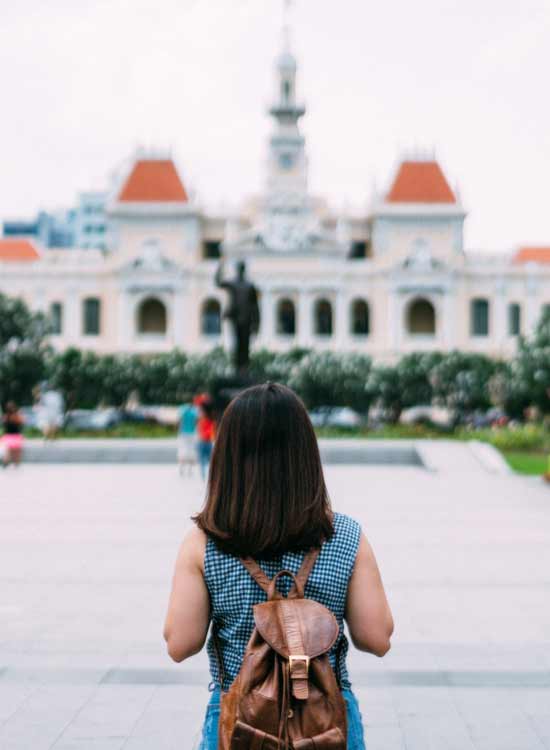
District 1
District 1 is backpacker central in Ho Chi Minh City. The streets bustle with a busy energy that resonates from the passionate street vendors, ceaseless stream of motorbikes and visible significance of the city’s culture, inspiring an excitement in all that find themselves amidst the hubbub of District 1. The narrow, quintessentially Vietnamese walkways to the south of September 23rd Park are home to a cluster of hostels, restaurants and bars that arguably make it the most popular backpacker spot in the city. It is an excellent place to socialise with fellow travellers whilst sipping on a chilled beer or munching on one of the city’s notoriously delicious street dishes.
In terms of cultural significance, District 1 contains some of the city’s greatest highlights. Located within an architecturally impressive former palace of grand French design, the Museum of Ho Chi Minh City guides visitors through the country’s ancient history as well as its more recent struggle for independence, displayed from the viewpoint of its locals. Other significant museums in the area include the varied Fine Arts Museum and the Couleurs d’Asie, a small gallery devoted to the incredible portrait photography of Ho Chi Minh City resident, Réhahn. The most beautiful of the area’s extensive list of temples is most likely the Jade Emperor Pagoda, a gorgeous complex possessing a serenity that belies its central location.
District 1 is also home to what is arguably the city’s best renowned shoppers’ haven in the form of the Ben Thanh Market. One of the city’s oldest standing buildings, the market is home to a wide array of stalls selling souvenirs and traditional trinkets, with a collection of food stalls preparing some of Ho Chi Minh City’s most famous street eats. It is well worth a visit even for those that aren't seeking a shopping spree experience. The market is also a fine example of the French Colonial-style structures that are dotted throughout the city. Some of the more notable architectural feats include the Opera House and Notre Dame Cathedral whose splendid facades provide a small taste of the magnificent architectural leftovers of France’s presence in the country until 1954.
Top Tip
Those that desire a more high-end experience when in Ho Chi Minh City should seek out the boutique-lined Dong Khoi street, whose lavish hotels and ritzy bars attract both the city’s wealthier residents and travellers with more expensive taste. The streets around the commercial Dong Khoi are also where some of Ho Chi Minh City’s more glamorous French architecture can be found, making it worth a visit even if you aren't willing to break the bank.
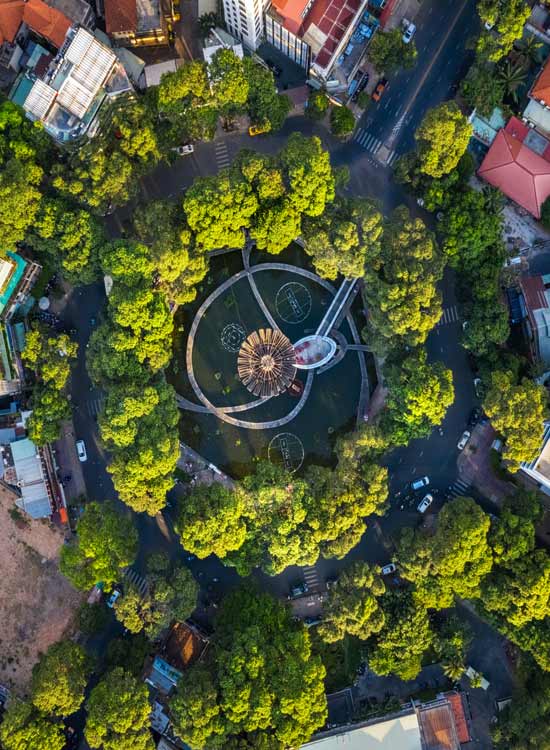
District 3
Situated directly to the north of the popular District 1, District 3 possesses fewer crowds and a greater authenticity than its southern neighbour, making it quieter despite its central location. Many of District 3’s streets are lined with towering greenery and dilapidated colonial villas, giving the area a more peaceful, slower moving feel that more accurately represents the day to day life of Ho Chi Minh City’s locals. The area is also fast becoming one of the city’s trendiest spots, with an increase in chic cafes, trendy bars and renovated villas nestled amongst traditional family homes that have stood for generations.
One must-visit site in District 3 is the War Remnants Museum, which offers a raw, eye-opening insight into the effects of war on a country. Some of the images and artefacts on show here are truly harrowing, but provide a necessarily vivid portrayal of the atrocities suffered in a nation ravaged by war. For a brighter experience seek out the vibrantly pink visage of Tan Dinh Church - a rose-toned colonial church that is at once absolutely stunning and utterly bizarre. Evenings see the shores of District 3’s diminutive Turtle Lake come to life as the surrounding roundabout fills with street food vendors and locals desiring a taste of their appetizing goods. It’s an excellent way to both immerse oneself into a jovial local atmosphere and feast on some of the city’s most delectable treats.
Top Tip
In 1963 Buddhist monk Thich Quang Duc set himself alight at a busy intersection in Ho Chi Minh City in protest against the corrupt ruling of Ngo Dinh Diem, South Vietnam’s leader at the time. The Venerable Thich Quang Duc Memorial, depicting the legendary monk engulfed in flame, now stands at the same site where he passed away. The statue is a powerful reminder of the unimaginable selflessness of an act that would become one of the most famous images to emerge from the time of the internationally infamous war.
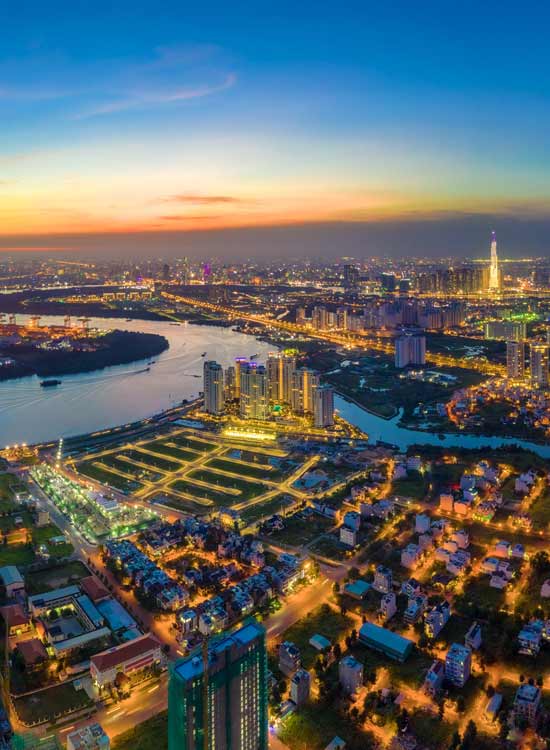
District 2
Located on the eastern side of the Saigon River, the expat influence on this district is palpable. District 2 is home to numerous independently owned restaurants and bars that accurately echo the gentrification that has taken place here. Despite the heavily westernised influence on the area - which has lead to some truly delicious international food spots - it has managed to retain a local feel, leading to an oddly alluring atmosphere that is not matched elsewhere.
Although the western influence on the area is evident to anyone that walks its streets, there are still a number of local shops, bars and eateries that ensure that the Vietnamese spirit still shines brightly. The streets are rife with the explosive colours of local street art that entice and intrigue, whilst quieter streets also boast their own appeal. The majority of District 2’s greatest hangouts are located in the Thao Diem area, nestled in an oxbow of the Saigon River to the north of the district. It is the perfect place to satiate any homesick cravings whilst very much remaining in a local atmosphere.
Top Tip
For a different creative experience take a trip to Saigon Outcast. The creative space hosts everything from modern art exhibitions to live music concerts to wall climbing lessons. A hub of alternative eateries and quirky bars located in a charmingly ramshackle, graffiti-coated environment, Saigon Outcast is an excellent place to visit in the evening to socialise over a few drinks with fellow travellers.
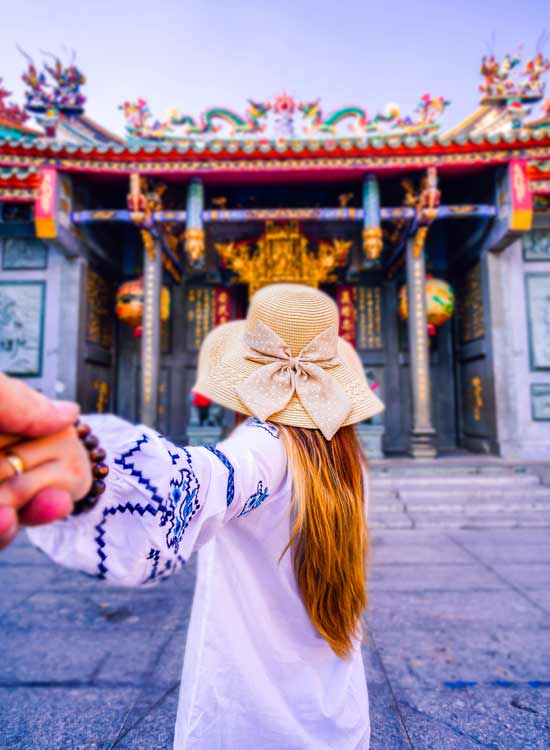
District 5
Most are drawn to District 5 in search of Vietnam’s largest Chinatown. Whilst many cities across the planet have a Chinatown, most don't even come close to matching the experience of exploring the markets, temples and restaurants hidden amongst District 5’s meandering alleyways. The primary attraction of the area is the immense Binh Tay Market. Whilst District 1’s Ben Tanh Market tends to attract more tourists, Binh Tay Market caters towards the needs of Ho Chi Minh City’s locals, making for a far more authentic and engaging visit. The district has other markets that each have a more specific focus, such as the An Dong Market which specialises in textiles and clothing.
However, the markets aren't the only evidence of Chinese influence in the district. Exploring the streets on foot will take travellers past Chinese herbalists, scarlet lanterns and the tempting scent of Chinese noodles and dumplings that could contend with the quality of cuisine found in Beijing or Shanghai. Ambling through Chinatown will also lead travellers past some of Ho Chi Minh City’s most alluring pagodas. These include the intricately designed Thien Hau Temple, whose beautiful facade and peaceful courtyard date back to the 18th century, and the tangerine toned Tam Son Hoi Quan Pagoda, a temple dedicated to the goddess of fertility.
Top Tip
Given its vast scale, walking around Ho Chi Minh City is often inadvisable. However, District 5 is an excellent area to explore by foot, as most of its treasures are hidden in subtle nooks and crannies that would otherwise remain undiscovered by less rigorous travellers, whether it be a concealed temple complex or a traditional restaurant serving succulent dumplings.
Vietnam Tailor-made Holidays
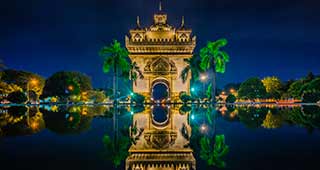
Highlights of Indochina
Duration:19 Days
Route:Phnom Penh to Luang Prabang
Tour Code:TCVL
Food and Drink in Ho Chi Minh City
For many, the street food scene in Ho Chi Minh City is the best in Vietnam, if not Asia as a whole. Packed with flavour and typically cooked right in front of your eyes to guarantee freshness, Vietnamese cuisine is such a vital part of the local culture and the delicious scents of the food on offer are sure to follow you as you explore the city streets. Whilst most dishes consist of a combination of succulent meat, subtle spices and rice in one of its many forms, the eclectic variety of the dishes on offer ensures that street vendors are sure to have something for everyone. Here are some of the most delicious street eats that you can find in Ho Chi Minh City:
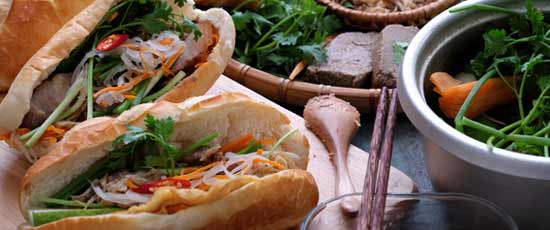
Banh Mi
A lasting influence from a time when Vietnam was part of French Indochina, banh mi combines western and eastern flavours to perfection. A crusty French-style baguette is filled with delicious pork, picked vegetables, pate, chillies and coriander, culminating in an explosion of flavour with a satisfying crunch.
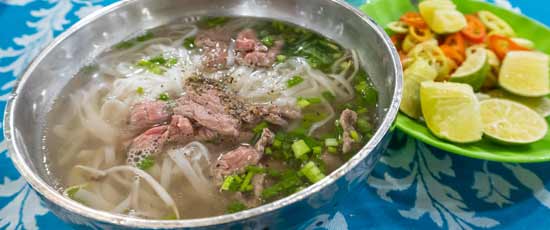
Pho
Perhaps the most popular Vietnamese dish across the globe, nothing matches having traditionally prepared pho in the country of its creation. Fine slices of beef and thin rice noodles are simmered in a subtly spiced broth before being topped with chopped chillies, beansprouts, lime and coriander to create a dish that is at once hearty and delicately flavoured.
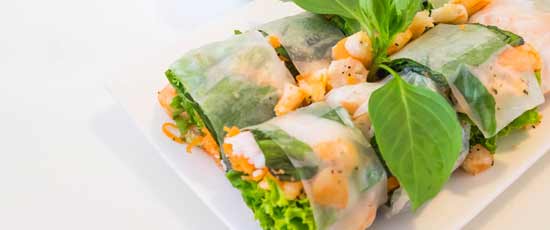
Goi Cuon
An alternative take on a traditional spring roll, goi cuon takes the satisfying flavours of the oriental classic but gives them a fresh twist. Pork, prawns and fresh vegetables are wrapped in a traditional rice sheet and served either hot or cold. Goi cuon is typically accompanied by a spicy peanut dipping sauce, adding that extra level of deliciousness to what is already a spectacular street food treat.
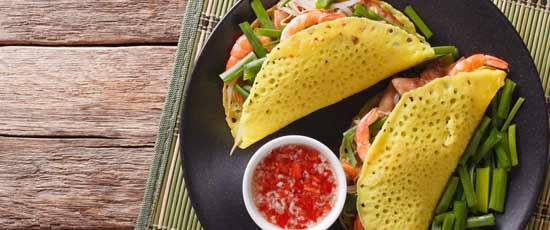
Banh Xeo
When exploring Ho Chi Minh City, travellers are sure to encounter the satisfying sizzling sound of a fresh banh xeo being fried streetside. A lightly spiced savoury pancake batter is fried before being filled with crunchy bean sprouts, fresh prawns, diced spring beans and served with a side of lettuce. As with much Vietnamese food, banh xeo is served with a chilli and fish sauce for dipping.
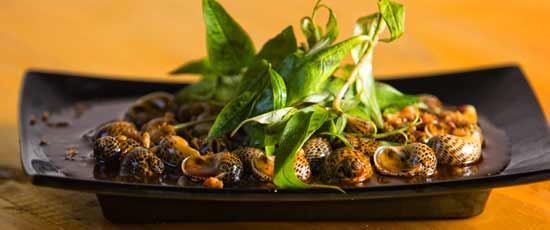
Cang Cua and Oc
A relatively simple but utterly scrumptious street food, cang cua and oc are crab claws and snails that are typically barbecued before being sprinkled with sea salt, lime and chilli. Given Ho Chi Minh City’s proximity to the Mekong Delta, this dish is always served fresh and is usually eaten as a snack during the evening time. More difficult to locate than the others on this list but well worth searching for.
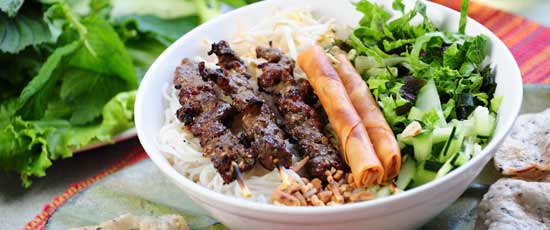
Bun Thit Nuong
A medley of contrasting flavours that somehow manage to perfectly amalgamate into a filling yet refreshing dish. Bun thit nuong typically consists of lettuce and cold vermicelli noodles, topped with grilled pork, bean sprouts and pickled vegetables. On top of that anything from peanuts to egg rolls to pickles can be added in a succulent combination that is as delicious as it is eclectic.
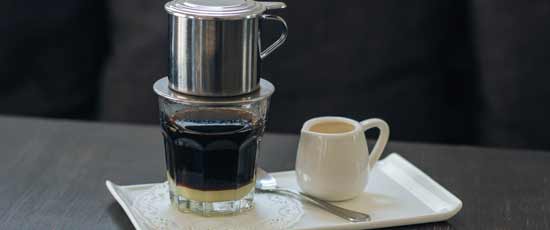
Coffee
Second only to Brazil in terms of the amount of coffee that it exports annually, it is no surprise that Vietnamese coffee is highly sought after by anyone that visits Ho Chi Minh City. Strewn across the city are countless coffee shops selling traditional Vietnamese coffee in the form of ca phe da - iced black coffee - which is often combined with condensed milk for a smoother, sweeter taste in the form of ca phe sua da. A great way to start any day.
Getting around Ho Chi Minh City
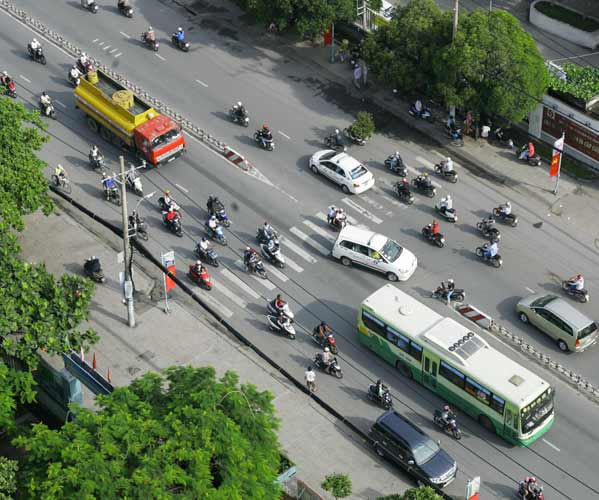
For those sticking to a single district it is typically possible to walk from one site to another, with the walk itself often proving fruitful in terms of discovering what would otherwise have gone undiscovered. However, given its vast scale, transport often proves an absolute necessity for anyone looking to explore the wider reaches of Ho Chi Minh City.
Taxis are widely available throughout the city, with very reasonable fares on offer, especially if you happen to be sharing a cab with others. It is important to note that taxi scams are far from uncommon in Ho Chi Minh City, so ensure that you travel with trustworthy companies to negate any chance of being ripped off.
The bus system in Ho Chi Minh City is not only thorough, with over 100 routes throughout the city, but the buses themselves tend to be very comfortable and in top condition. Consider planning your route beforehand to avoid confusion and riding the bus can prove a convenient and very affordable option.
Some opt to follow the example of the locals and rent a motorbike to explore the city. Whilst this may provide a thrilling and, in many ways, immersive experience, it should be noted that renting a bike with no prior experience can be dangerous, especially given the manic traffic situations that occur throughout the city. Helmets are a must.
Group Tours to Vietnam
Highlights of Asia
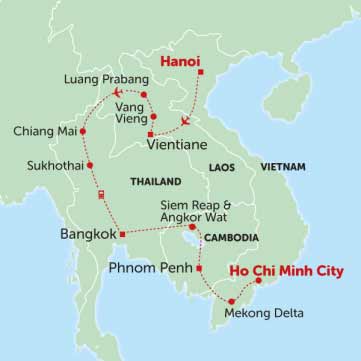
Duration:22 Days
Route:Hanoi to Ho Chi Minh City
Tour Code:ICHA
Vietnam, Laos & Thailand Express
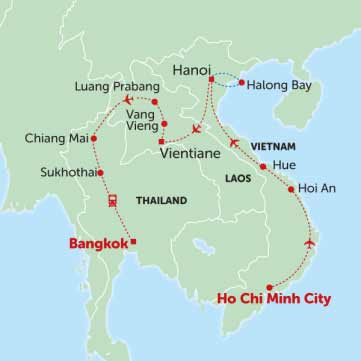
Duration:22 Days
Route:Ho Chi Minh City to Bangkok
Tour Code:ICVL
Southeast Asia Express
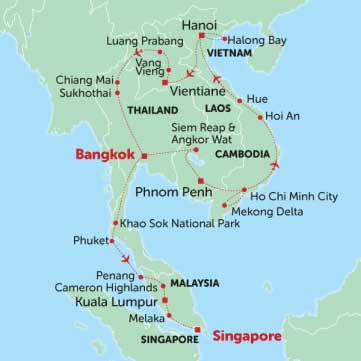
Duration:43 Days
Route:Bangkok to Singapore
Tour Code:ICAE
Alternative things to do in and around Ho Chi Minh City
Not only a former capital but also one of the more significant locations during the Vietnam War, their is an air of rich significance surrounding Ho Chi Minh City. This sensation extends beyond history through the natural spectacles of the famous mazing waterways of the Mekong Delta and gorgeous white sands of South Vietnam’s coastline. With such intriguingly endearing features characterising the city and its surrounding landscape it is easy to appreciate why there is such a bounty of experiences to be had both within the city’s limits and just beyond its borders.

Exploring the Mekong Delta by boat
Starting with the obvious - an absolute must for anyone that visits South Vietnam, the Mekong Delta is right on Ho Chi Minh City’s doorstep and provides visitors with what is arguably the most quintessentially Vietnamese experience that the country has to offer. Floating gracefully along the labyrinthine water system with its vibrant green banks fills visitors with a tranquil excitement and adventurous intrigue as they are introduced to an ecosystem and way of life that are immensely immersive.
Situated between the fascinating thicket of the emerald undergrowth are towns and villages that have adapted to life by the water in a number of eccentric and innovative ways, from stilted houses to house boats to entire villages floating on the Mekong’s surface. One must-see event in the Mekong Delta are the floating markets. Locals gradually drift past each other as they barter in search of the best deal possible, their boats stocked to the brim with all manner of produce from across Vietnam. Unlike many other floating markets in Southeast Asia, the majority of markets on the Mekong Delta can only be accessed by boarding a boat and casting off from the riverbank. Can Tho is the largest city in the delta and a popular spot to explore both on foot through its narrow back streets and by boat amongst its characterful canal system or any of the area’s floating markets.
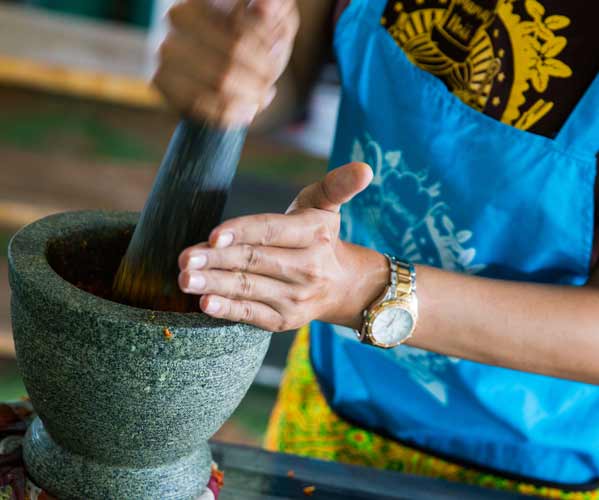
Preparing your own delicious Vietnamese food at a cooking class
Ho Chi Minh City is home to a number of top quality cooking classes designed to divulge insider knowledge on how to master a number of dishes that you are sure to have sampled on the city’s streets. Classes vary from a simple preparation of the country’s most popular dishes to a full on experience where attendees will hand pick all the ingredients themselves and learn about the health benefits of each dish that they cook. Most lessons include a tour of a local market to gather ingredients, making for a cultural experience as well as a cooking lesson.
Not only is the experience a guaranteed day of fun but those that attend the lessons will also go home with a different manner of reminder from their time in Vietnam, allowing them to revisit the spectacular flavours of this incredible nation whenever the mood suits. Those looking to travel on one of our Tailor-made tours to Vietnam can enquire with our Tailor-made team about including a cookery course in their visit to Ho Chi Minh City.
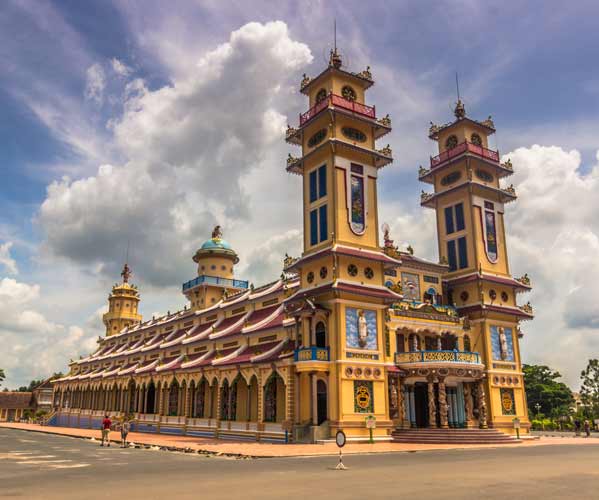
Learning about Caodaism at the Cao Dai Temple
Two hours to the north of the city is Tay Ninh, home to one of the most enthrallingly obscure religious buildings that one is likely to cross in Vietnam - the Cao Dai Temple, which was constructed in 1955 as a shrine to the neoteric religion of Caodaism. Formed at the start of the 20th century, the belief is an inexplicably harmonious amalgamation of a variety of other popular religions. Just as the belief system takes inspiration from a collection of other beliefs, including Buddhism, Christianity and Islam, so too does the Cao Dai Temple represent a culmination of the holy places of these religions.
The temple, or Holy See as it is called by its members, possesses the spires of a church with the tiered roofs of a buddhist pagoda and the palatial grandiose of a synagogue with the resplendent colours of a Hindu temple - the temple is inexplicably as confusingly jumbled as it is quirkily coherent. The interior has the grand atmosphere of an Anglican church with ornate oriental carvings adorning the pillars and the religion’s eye symbol on each stained glass window. The temple is at once bewildering and humbling, standing as a physical representation of modern multiculturalism and harmony between belief systems that so often see clashes between opinions on what is perceived to be the truth.
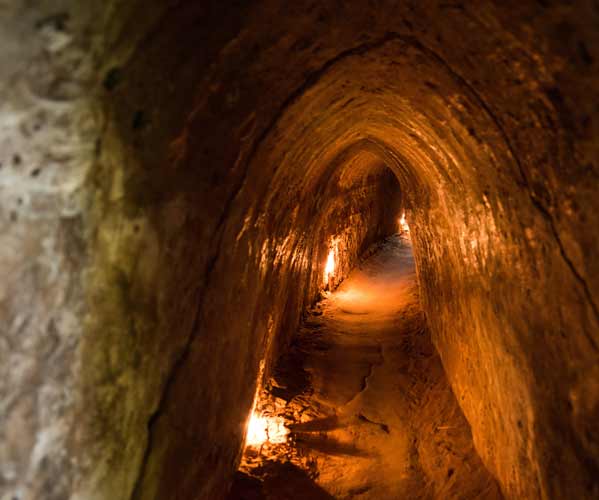
Taking a step back in time at the Cu Chi tunnels
Echoes of the atrocities caused by the Vietnam War still reverberate loudly throughout the country. Visiting Vietnam opens a travellers’ eyes to the atrocities of the war and the scars that have been left behind act as a reminder of quite how fresh memories of the war are. The Cu Chi tunnels provide a vivid insight into the plight of the Viet Cong in their struggle against the US forces and the ingenious ways in which they battled a world power with such scanty resources at their disposal. A testament to the determination and resourcefulness of the Vietnamese people.
Visitors will learn about the war from a local viewpoint, outlining the conditions faced by Vietnam’s soldiers and the guerilla tactics that were used to withstand the US forces. Visitors will have the opportunity to enter the claustrophobic tunnel system used by the Viet Cong for a firsthand experience of the gritty lifestyle they were forced to adopt in the defence of their country. The Cu Chi tunnels provide an engaging first hand taste of the desperate measures taken in times of war.
Vietnam Blogs
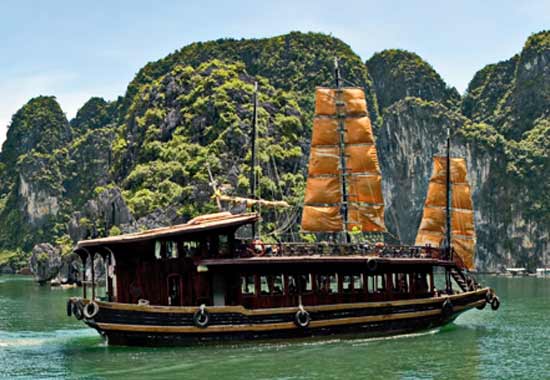
Top 5 Experiences to have in Vietnam
Vietnam is a jewel of Southeast Asia, with its rolling hills, lush rice paddies and stunning coastline. A fantastic blend of busy cities, quaint countryside and UNESCO World Heritage Sites, Vietnam has a little something for everyone. Whether it’s eating your way around Hanoi, swimming in the unique Halong Bay or sampling fresh fruit in the Mekong Delta, Vietnam will awaken your senses and leave you longing to return to this beautiful part of the world. Keep reading to discover some of the best experiences in Vietnam!
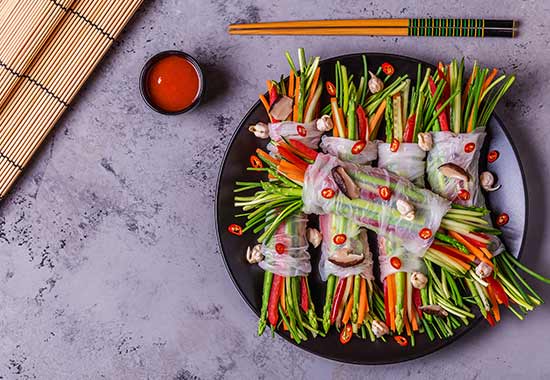
Why Southeast Asia is the ultimate vegan travel destination
Southeast Asia is one of the most popular backpacking destinations for adventurous and budget-friendly travellers. As well as rich cultures, otherworldly landscapes and some of the best beaches in the world, many flock to this corner of the globe for the unforgettable foodie experiences. While the thought of the Southeast Asian food scene might conjure up images of fried insects on sticks, it actually has a multitude of vegan choices, with plant-based cafes and restaurants regularly popping up in the bigger cities. In honour of World Vegan Day on 1st November 2019, we have compiled some inspiration behind why Southeast Asia is the ultimate vegan friendly travel destination.





